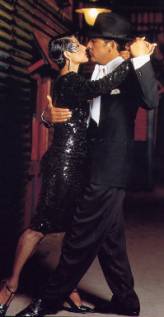 Buenos Aires
Buenos Aires
General Recommendations:
Buenos Aires (Bs. As.) is a European city that, due to some quirk of destiny, is located in Argentina, South America. The first surprise to the visitor is its size. Its varied architecture evidences the influence of Spaniards and Italian ancestry. Broad avenues, imposing buildings and attractive parks, countless coffee houses or confiterías as they are know in this great austral country are there to be enjoyed fully. You cannot claim to know Bs. As. if you haven’t enjoyed its confiterías, the rite of sitting in one near a window or in the open air, placing your order and staying there all the time that you please without anyone bothering you.
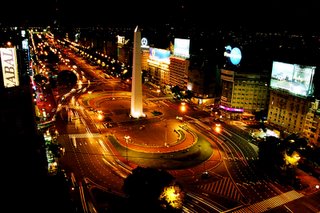
The city is an agglutination of neighborhoods with life and culture of their own, full of traditions brought from far away by the immigrants of the past, their original culture evident at every corner. The porteños, as the citizens of Bs. As. are known, are warm, friendly people, kind and affable to visitors and with an impeccable service attitude. Bs. As. is a city to be enjoyed on foot. Take comfortable walking shoes, the city is great for walking and exploring around.
I invite you to enjoy Bs. As. in this guided tour separated by areas.
 La Recoleta –
La Recoleta – This is an upper echelon area of the city with many

open air restaurants and cafés. You must have a drink or coffee at La Biela, the most traditional and well know café. Plush apartment dwellings and flats surround gigantic rubber trees and an extensive park with many arts and crafts stands on weekends that invite a leisure stroll. Walk around and enter the Recoleta Cemetery to appreciate the past riches of the Argentinean nation. Evita Perón, wife of past populist dictator and president Juan D. Perón is buried here. Ask where her tomb is located and find your way there. The church of Nuestra Señora del Pilar borders the

cemetery. Just outside, along the park, is the Recoleta cultural and shopping center with many open-air restaurants and interesting shops. If you continue down the park and to the left on the broad Av. Libertador you can walk to the Museo Nacional de Bellas Artes and the Bs.As. Design Center. On the opposite direction
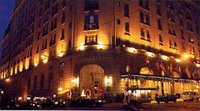
(south) on the Avenida Alvear you must visit Hotel Alvear Palace; the imposing lobby and the breakfast brunch are both memorable. This is the hotel favored by artists and head of state.

They have a new Tango Show place for nightly shows. Several blocks behind the Alvear and over Avenida Libertador you will find Patio Bullrich, a Shopping Mall worth visiting.

 Plaza San Martín & Calle Florida (Centro)
Plaza San Martín & Calle Florida (Centro) – In front of the Hotel Marriott Plaza, the Plaza San Martín is surrounded by very interesting buildings. The Palacio San Martín and the Officers Club (Circulo Militar) speak loudly of their glorious past. Casa López, almost on the corner where Calle Florida begins is one of the more prestigious places for leather apparel. Walk down (East) along Florida or San Martín toward the Retiro Train Station in front of the Sheraton and take a stroll inside. On the opposite direction from Plaza San Martín, Calle Florida is the biggest open air shopping area of the city. You may walk it from the Plaza all the way to Av. Belgrano where it becomes unsafe for visitors. On the many side streets along the route there are places where you’ll find the same goods sold along

Florida at discount prices. You must visit Centro Comercial Galerías Pacifico (Shop. Mall) on the corner of Florida & Av. Córdoba. Do be careful with your wallets and purses while walking around the whole area.
 Lavallé
Lavallé – Perpendicular to Florida, as you walk west you’ll find Av. Lavallé. Turn right (north) toward Av. 9 de Julio. Lavalle is a boulevard closed to vehicles with many cinemas and places to dine. La Estancia (Asador Criollo) or the Palacio de la Papa Frita are excellent restaurants offering local fare. You can walk all the way to the Obelisk at the very broad Av. 9 de Julio on the Plaza de la República.
 Monserrat
Monserrat – The area to the south that extends from the seat of government (Casa Rosa) along the Avenida de Mayo to the Congreso is known as Monserrat. Near here, in Moreno & Piedras is the Hotel Intercontinental, I recommend that you stop there and ask for their map of the city. It has
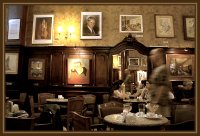
an excellent self-guided walking tour and directions for the area. You may want to get to the hotel by taxi and begin your tour of this area from the hotel. On the Av. de Mayo you may turn east and go toward the area of government buildings: Cabildo de B.A., Catedral, Casa Rosa & la Plaza de Mayo.
 Puerto Madero
Puerto Madero – The old port, now turned into a fashionable shopping and dinning center. Plan a visit and lunch in the area. La Cabaña de las Lilas is one of the best meat restaurants in town. Also there, la Caballeriza & Rodizio offer excellent meats and international cuisine. You may want to walk toward Casa Rosa and go into the building of the Correo Central (Post Office) where there is always some kind of exhibit. El Cabildo, Congreso, Catedral, etc. are all impressive buildings accessible from this area. In the Plaza de Mayo and in front of the Casa Rosa there is always some group picketing and complaining to the government.

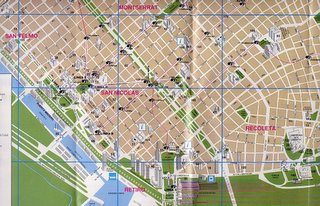 Tren de la Costa
Tren de la Costa – Ask at your hotel and take a taxi to the Mitre Station where you can board the Tren de la Costa for a scenic ride to Tigre or Delta. It’s a nice ride; each station along the way is a shopping center. You may get off and re-board freely along the way. At the final station in Tigre you’ll find places to eat and walk around, including an amusement park. You can take a European style cruise boat for a drink and ride along the many canals. The water is not pretty but the homes and vacation villas of the wealthy are worth the ride.
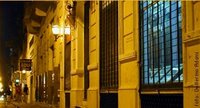 San Telmo
San Telmo – San Telmo is the heart of the old city and the area where tango was born. You must
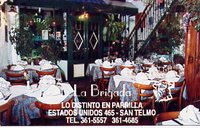
go on a Sunday, which is the day of the market fair and antique show at Plaza Dorrego. Do go into the many antique stores that surround the plaza to see and understand the unbelievable wealth of the Argentinean nation had in its glorious past. This is also the area where many establishments cater to the tango aficionados. You must experience a tango show at the Viejo Almacén, the most famous. As you walk in, look at the
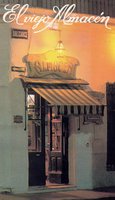
impressive School of Engineering just to the east. La Cump
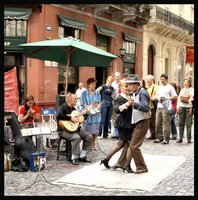
arsita, just around the corner (Chile 302) is more authentic, although small and informal. Here is where the native porteños go for a night of tango. La Brigada (Estados Unidos 465), also in the area is my favorite meat restaurant in Bs. As. This area is NOT for walking around at night.
La Boca & Caminito – The old part of the wharf. You have to take a taxi to  get there. Starting at the beginning of the Caminito, a colorful cobblestone street lined with crafts and paintings for sale you can explore the area during daylight. The neighborhood is loaded with fondas, traditional bar and restaurants. Get there for lunch.
get there. Starting at the beginning of the Caminito, a colorful cobblestone street lined with crafts and paintings for sale you can explore the area during daylight. The neighborhood is loaded with fondas, traditional bar and restaurants. Get there for lunch.  The surroundings are old and there is really not much to see but here you do feel transported to foregone times. A visit to Museo de la Boca, the Museo Naval and the many antique stores found at every turn tells a tale of European immigrants arriving at this very spot to help build this nation to its
The surroundings are old and there is really not much to see but here you do feel transported to foregone times. A visit to Museo de la Boca, the Museo Naval and the many antique stores found at every turn tells a tale of European immigrants arriving at this very spot to help build this nation to its 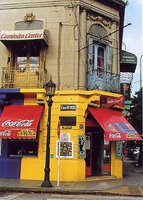 past grandeur. The Stadium of La Bombonera, within walking distance is the home of the famous Boca Juniors soccer team.
past grandeur. The Stadium of La Bombonera, within walking distance is the home of the famous Boca Juniors soccer team.
 Retiro & Barrio Norte
Retiro & Barrio Norte – You may start at the Plaza San Martín in front of the Circulo Militar and follow Arroyo north to the Avenida Sta. Fé and on to embassy row. From there you may walk to the Teatro Colón. This fabulous opera and concert hall is famous for its outstanding acoustics. You must try to attend whatever is playing to experience its old world charm. The Obelisco, the impressive Brasil Embassy, the Embassy of France and other edifications in the area are worth the long walk.
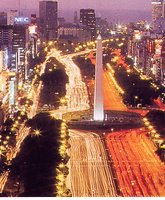
 Palermo & Costanera Norte
Palermo & Costanera Norte – Near the Jorge Newberry airport, along the coast of the Río de la Plata lays the Costanera Norte. Here you will find many restaurants and a great place to stroll leisurely along this coastal boulevard. To get there you must cross the Palermo area where the zoological and botanical gardens are located. Polo fields, large grassy parks, imposing fountains and the Japanese Gardens are some of the many things to see in this upper class area of Bs. As. If you are a jogger or serious walker, this is the area to explore to your hearts content.
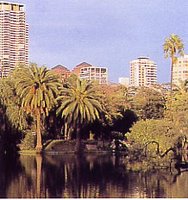
 The Sybaritic Pleasures of Argentina
The Sybaritic Pleasures of ArgentinaOne cannot write about Buenos Aires without discussing the enjoyment of its wines and meats, an important part of the culture for the porteños, along with their tangos and the elegant women that are part of this beautiful city.
Wines Following their European ancestry Argentineans enjoy wine at every opportunity. Argentina is recognized for its wines, having reached the fifth place worldwide as a wine producing country. In recent years, the great marketing efforts and the economic growth of neighboring Chile has made a significant impact in the international wine market making the presence of Argentinean wines small by comparison. However, the high quality of the Argentinean red wines is still well recognized and respected. There is nothing like sitting at La Biela in Recoleta in a crisp fall afternoon and enjoying a good bottle of the local tinto.
The history of the wine industry in the República Argentina

goes back to the arrival of the Spanish colonizers. Already by the end of the XVIII century, grape growing had become an economic activity of importance in the area of Mendoza & San Juan. As years went by, the activity evolved spreading to other areas of the country. In the present, four main wine producing areas can be noted: Salta, San Juan, Mendoza y Río Negro.
Currently, all regions produce export-quality wines. The Salta region produces typical regional wines of excellent quality. The Andean regions south of de Mendoza & San Juan enjoy great climate and soils that allow excellent maturation of the grapes, producing wines of exceptional quality. The Patagonian region of Río Negro & Neuquén constitutes the southern limit of the growing regions producing fine wines of appreciable quality.
The following estates are noted for their quality and continued improvement:
Salta
Bodegas Etchart S.A. & Michel Torino Hnos.
MendozaBodega Luigi Bosca, Bianchi, Cavas de Weinert, Escorihuela, Finca Flichman, La Rural, Bodegas y Viñedos López, Navarro Correas, Norton, Proviar Chandon, San Telmo.
Río Negro
Bodegas y Viñedos Humberto Canale
RecommendationsMy recommendations in order of personal preference and as a sugestion for wines to taste during your stay:
Tintos (reds):
For most palates:
Bianchi Particular of Bianchi
Clos Du Moulin from the house of Proviar Chandon
Colección Privada of Navarro Correas
For wine conosieurs
Enzo Bianchi de Bianchi
Whites :
Bianchi Cinta de Plata of Bianchi
Others worth trying during your visit
Tintos (Reds):
Syrah of Luigi Bosco
Pont L'eveque of Escorihuela
Caballero de la Cepa of Finca Flichman
R.F.N of La Rural
Chateau Montchenot of Bodegas y Viñedos López, C.A.
Pinot Noir of Navarro Correas
Cuesta del Madero of San Telmo
Fond de Cave Cabernet Sauvignon of Trapiche
The experience of sampling a good wine in their country of origin where they had not been subject to stress from shipping, harsh storage conditions and overseas travel is an opportunity you do not want to miss. The variety and quality of the Argentinean wines and the atmosphere of Buenos Aires will insure you a unique experience.
 Meats
Meats
It is well know the importance of meat in the Argentinean gastronomy. Meat was one of the principal reasons Argentina became one of the top economies of the world. The cattle ranches or estancias in the province of Buenos Aires are evidence of the wealth generated and of the quality level achieved by people with a long tradition as producers of world-class livestock.
The Asador Criollo or grill represents all what the gaucho (plainsmen) traditional meat cooking is all about.
The meat, generally cut in large sections is slowly cooked by irradiation in a circular hearth. The flames never touch the meat that is carefully cooked to perfection under the constant eye of the asador or grill man. Buenos Aires has many Asadores Criollos: Las Nazarenas, La Estancia, La Cabaña, La Caballeriza, Las Lilas are all excellent places to sample Lechón (Young Pork), Chivito (Lamb), Asado (Beef Rib) and the famous bifés (your boneless steak).

The Bifé de Chorizo is a special cut sirloin that you must try. A good meat dinner starts with Chinchulines de Cordero (Stuffed Lamb Tripe) & Mollejas (sweetmeats) that are a particular exquisite treat.
Meat, in Argentina more than a dish, is a tradition.
Precautions
Like many other large capital cities of the world, Buenos Aires is safe but precautions should always be taken for your safety.

Never carry a lot of cash and your original identity documents (Copy and carry only the main pages of your passport) when you walk around the streets. Be particularly careful in crowded corners. It is best to carry with you only what is necessary for the day and leave everything else at the hotel safe. Most of the city and places mentioned are safe but opportunity invites problems and purse-snatchers and vandalism certainly is present. Take only taxis or remises (hired driven cars) at your hotel or in clearly marked cue lines at airports. Insist that taxis leave you at the very entrance of your hotel in plain sight of bellboys. Argentina has had so many different currencies in a short time that old worthless bills are still around for tourist to be had. Be careful with changing large bills in taxis and street stands. Change currency only at banks or hotel counters.
The subway system is usable, easy to understand and fairly safe during regular hours.
Lastly, you cannot leave Buenos Aires if you have not:
Eating a pizza. Buenos Aires is recognized as the pizza capital of Latin America
Enjoy the Brunch at the Hotel Alvear Palace
Drink a latte at Café Tortoni on Av. de Mayo near the corner of Florida
Buy chocolates and wines for your return trip at La Savoy (there are several sites, ask the hotel or taxi)
Eat in a restaurant in La Recoleta & Costanera Norte
See a movie at a cinema. The cinema is something very special in Argentina.
Have a bottle of wine in my name (or bring me one)
Buenos Aires, a city to be enjoyed.


RM , Oct.2004
, Oct.2004


 The city is an agglutination of neighborhoods with life and culture of their own, full of traditions brought from far away by the immigrants of the past, their original culture evident at every corner. The porteños, as the citizens of Bs. As. are known, are warm, friendly people, kind and affable to visitors and with an impeccable service attitude. Bs. As. is a city to be enjoyed on foot. Take comfortable walking shoes, the city is great for walking and exploring around.
The city is an agglutination of neighborhoods with life and culture of their own, full of traditions brought from far away by the immigrants of the past, their original culture evident at every corner. The porteños, as the citizens of Bs. As. are known, are warm, friendly people, kind and affable to visitors and with an impeccable service attitude. Bs. As. is a city to be enjoyed on foot. Take comfortable walking shoes, the city is great for walking and exploring around.


































